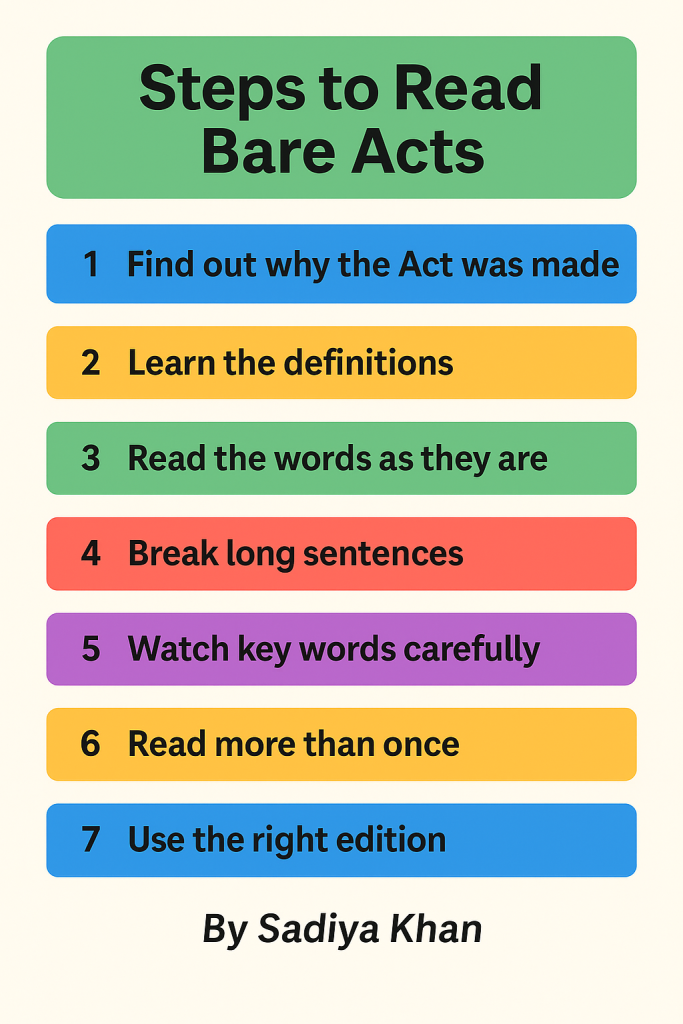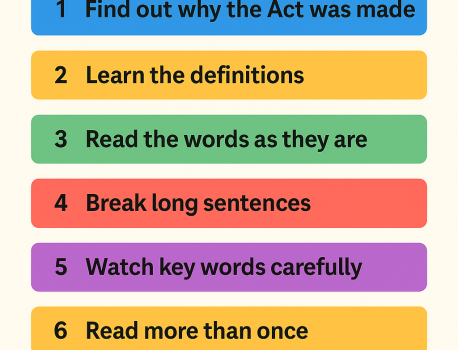Reading Bare Acts is the foundation of legal education and practice. Yet, many law students find them difficult because of their technical and old-fashioned language. This guide breaks down the process into simple steps that anyone can follow.
1. Start with the Purpose of the Act
Every Act begins with a long title or preamble. This explains why the Act was made. For example, the Indian Contract Act, 1872 says it is meant “to define and amend certain parts of the law relating to contracts.”
2. Learn the Definitions
Most Acts contain a section on definitions, often Section 2. These definitions control the meaning of terms throughout the Act. If there’s no definition section, the Act may refer to another law for interpretation.
3. Read Literally
The first rule of statutory interpretation is the literal rule. Read the words as they are written, without adding extra meaning.
4. Break Down Long Sentences
Bare Acts often use long and complex sentences. To understand them:
- Split them into smaller parts
- Read slowly and carefully
- Pause at commas
5. Pay Attention to Key Words
Certain words can completely change the meaning of a section. Watch out for words like and, or, may, shall, provided, notwithstanding.
6. Read Multiple Times
Understanding Bare Acts takes more than one reading.
- First read: get the overall sense
- Second read: highlight key portions
- Third read: revise only your highlights
7. Choose the Right Edition
You can use the English edition or a diglot edition (English plus a regional language). If you struggle with English, check the translation. Always use the latest updated version.
Bare Acts are not meant to be easy. But with patience, practice, and these 7 steps, they will become much clearer.
By Sadiya Khan


